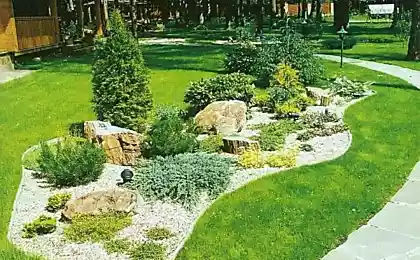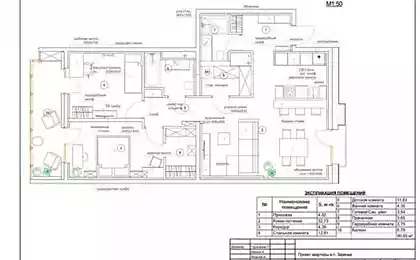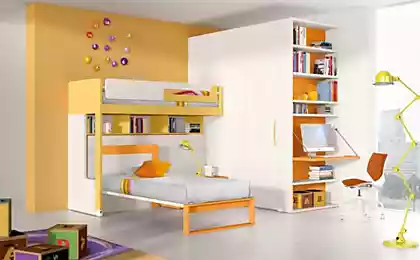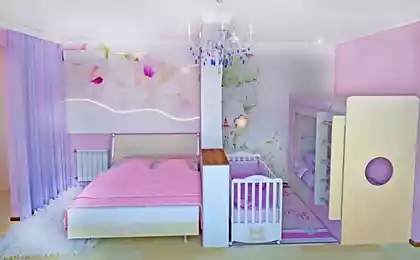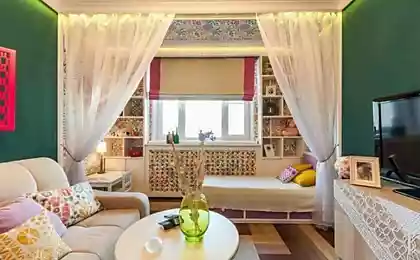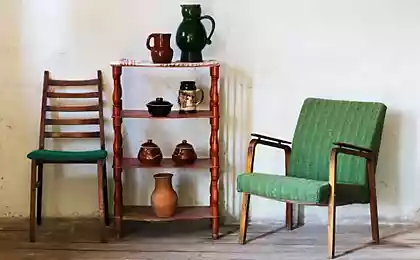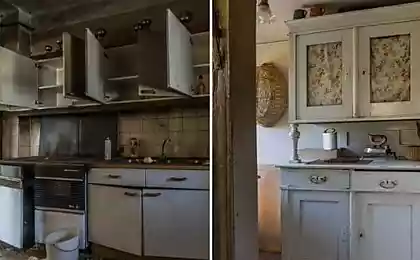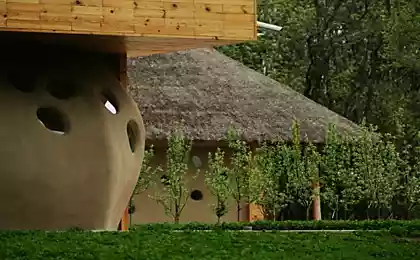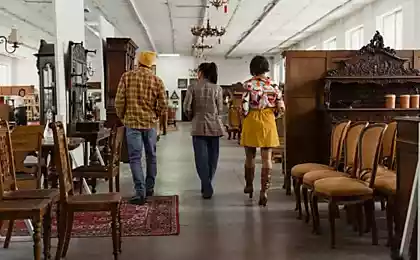556
Health a child's room
We are talking about basic clutter the space with things that we commonly think are "necessary", but not used in years. If for an adult, this situation is fraught with depression, then the child is an unfavorable factor for the development of the senses, the formation of thinking and the decent upbringing of volitional impulses. Read more on this topic, we will touch on in future articles, but in this article I just want to say that if not solved this problem, then the following rules are of little help to rectify the situation.
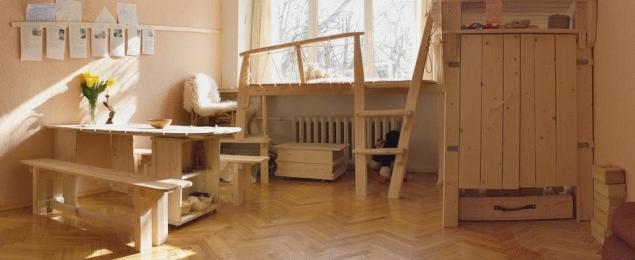
Space so the first of those rules is in space most of the space. This means that regardless of the physical dimensions of the room, stay in it should cause a sense of integrity, of light and space. Less bulky items, and if possible, leave the bright window seat free. When the soul of a child listens to a space, it does not tolerate overcrowding.
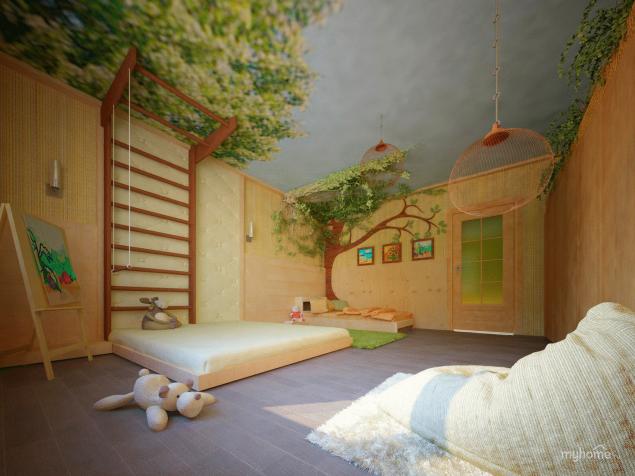
Zoning the Second rule, at first glance, contradicts the first: for the child's perception is extremely useful clear visual zoning, which transforms the integral space in combination with small cozy corners, each of which is self-sufficient. Children love secluded houses, but a sensitive adult is well aware that the words "cozy" and "close" have little in common. Resulting in the connection of the first two rules, for example: – an integer should give a feeling of spaciousness – the parts of the whole – the embodiment of security and comfort. If in our context to represent symbolically the relation of the whole and the parts, it would be possible to designate a combination of "World – Building". This relationship brings a child, on the one hand, openness and trust in the world (space and light), on the other confidence in himself and in his immediate environment (comfort).

A rule of the character the Third rule I call the "Rule of character". What does it mean? Imagine some shelf, on which lie some things. If things are piled, the character called "Chaos". If things are "square-cluster" Association, the character says – "Prepare the army". If on the shelf are paper and crayons, it means "to Draw". If you add them to the hammer, socks and a ball, the view will feel the same as a horse, which gave the spurs, saying "forward," and simultaneously pulled on the reins, which means "stop". In this case, the perception of the child is in a state of paradox. If these characters are "normal" practice environment, the perception of "rears" and about the education of good habits may not be considered. Hieroglyph is a visual guideline! What actions are the consequences of a failed "directives" can be observed, leaving five times in a row untidy room of the baby. A "visual characters" – the promise of a healthy development of the will, tools, education of the senses, and in the future – the assistants in the formulation of productive thinking of the child.
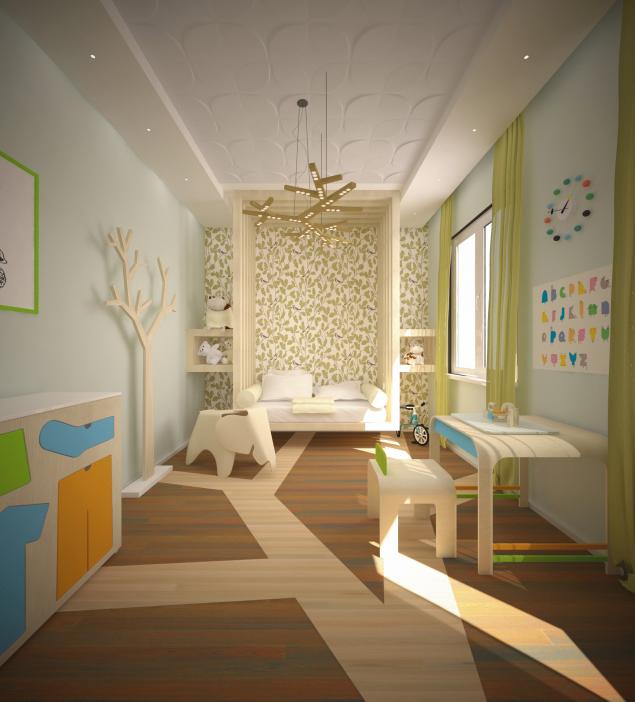
The retention rule for the "Rule of character" goes back to the art of composition and it is extremely difficult to adhere to, if not complied with the following rule – "Rule". It says that every thing is stored in the area to which it belongs and things should be just as much able to cover the asset of children's consciousness. Just as people cannot efficiently digest at once four meals, and children's perception is difficult with the qualitative assimilation of mountains of toys, books, clothes, old pictures, Souvenirs and gifts good family. Children (from instinct) simply cease to use it all. When planning a child's room each category of things has its own place, and in this place, "category" lives in a gradually changing collection. This collection is not strong number, functionality, integrity, compatibility of displays and visibility for the child's perception. To make it easier to deal with "Characters of children's space" and "storage" costs when planning a child's to follow some technical rules: • Furniture, furnishings, clothes, toys etc., should be so placed that the room was easy to do wet cleaning. You need to be creative to minimize accumulations of dust. • Entering the room from the doorway we see a window. It is unacceptable that the path to this view was blocked by a wardrobe, bed, etc. The bright place near the window it is better not to take and to leave free. This area is adjacent to the rack of toys, and a child playing on the square. • When the child is the zone "living room" – a round or better yet a semi-circular table that can fit how people. This area is adjacent to the "bright place" and it consists of the characters "Read", "to Draw", "Tinkering". • Bed and garderobchik better positioned far from the window of the room. Not bad to Wake up in the morning, the child saw the window. If more than one child, then each should be personal (low) a wardrobe, which houses well-planned and foreseeable for a child asset of the clothes. All other apparel (passive) is not here. • Well, if you have the ability to arrange sufficient autonomy for such areas as "Cabinet" (to teach lessons), "Workshop" verstecken and simple tool, "a Doll's house". • A function that performs the "complex" is an essential attribute of the nursery. Themselves. personally, I dislike because they all give something "square-cluster and fire training". Children need to climb, hang and swing I decide by other means. A multi-level space with a "birdhouse" from the ceiling, which will not fit any adult – the ultimate dream baby.
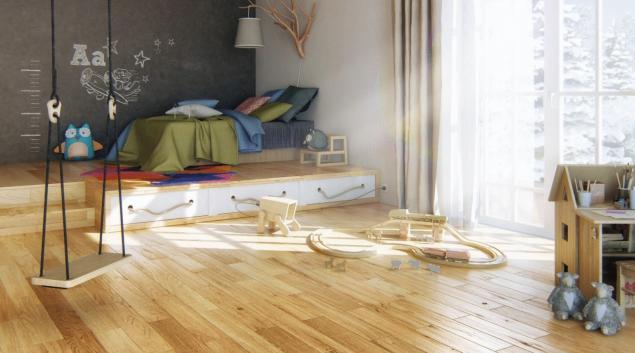
Balance Attention! I will try in a few words to describe an important and difficult "Rule, static-dynamic balance". Visual perception, placed in the environment of static forms, not according to the soul of mobility. The consequences of a long stay in the "statics" are a lack of imagination, habit to think abstractly and only in the given framework. This polar state is a state of chaos. Its dynamics, in contrast, deprives the soul of any support and balance, which later is expressed in hidden or obvious lack of confidence and/or "crazy" fantasies. Therefore, for the harmonious development of the child good to the shape of the environment was visually dynamic, but maintained a dynamic equilibrium (stability) and had good proportions. Most importantly the Last and main rule in this list of recommendations is the "Rule of ease of execution" what are you doing in the nursery should be executed with ease, pleased and in a good mood. Work in the children's space (devoid of acrimony!) the game, which mysteriously otmechaetsya on the walls, and for a long time continues to sound from the space, filling the nursery with a balance of activity and tranquility. Source
Source: /users/1081

Space so the first of those rules is in space most of the space. This means that regardless of the physical dimensions of the room, stay in it should cause a sense of integrity, of light and space. Less bulky items, and if possible, leave the bright window seat free. When the soul of a child listens to a space, it does not tolerate overcrowding.

Zoning the Second rule, at first glance, contradicts the first: for the child's perception is extremely useful clear visual zoning, which transforms the integral space in combination with small cozy corners, each of which is self-sufficient. Children love secluded houses, but a sensitive adult is well aware that the words "cozy" and "close" have little in common. Resulting in the connection of the first two rules, for example: – an integer should give a feeling of spaciousness – the parts of the whole – the embodiment of security and comfort. If in our context to represent symbolically the relation of the whole and the parts, it would be possible to designate a combination of "World – Building". This relationship brings a child, on the one hand, openness and trust in the world (space and light), on the other confidence in himself and in his immediate environment (comfort).

A rule of the character the Third rule I call the "Rule of character". What does it mean? Imagine some shelf, on which lie some things. If things are piled, the character called "Chaos". If things are "square-cluster" Association, the character says – "Prepare the army". If on the shelf are paper and crayons, it means "to Draw". If you add them to the hammer, socks and a ball, the view will feel the same as a horse, which gave the spurs, saying "forward," and simultaneously pulled on the reins, which means "stop". In this case, the perception of the child is in a state of paradox. If these characters are "normal" practice environment, the perception of "rears" and about the education of good habits may not be considered. Hieroglyph is a visual guideline! What actions are the consequences of a failed "directives" can be observed, leaving five times in a row untidy room of the baby. A "visual characters" – the promise of a healthy development of the will, tools, education of the senses, and in the future – the assistants in the formulation of productive thinking of the child.

The retention rule for the "Rule of character" goes back to the art of composition and it is extremely difficult to adhere to, if not complied with the following rule – "Rule". It says that every thing is stored in the area to which it belongs and things should be just as much able to cover the asset of children's consciousness. Just as people cannot efficiently digest at once four meals, and children's perception is difficult with the qualitative assimilation of mountains of toys, books, clothes, old pictures, Souvenirs and gifts good family. Children (from instinct) simply cease to use it all. When planning a child's room each category of things has its own place, and in this place, "category" lives in a gradually changing collection. This collection is not strong number, functionality, integrity, compatibility of displays and visibility for the child's perception. To make it easier to deal with "Characters of children's space" and "storage" costs when planning a child's to follow some technical rules: • Furniture, furnishings, clothes, toys etc., should be so placed that the room was easy to do wet cleaning. You need to be creative to minimize accumulations of dust. • Entering the room from the doorway we see a window. It is unacceptable that the path to this view was blocked by a wardrobe, bed, etc. The bright place near the window it is better not to take and to leave free. This area is adjacent to the rack of toys, and a child playing on the square. • When the child is the zone "living room" – a round or better yet a semi-circular table that can fit how people. This area is adjacent to the "bright place" and it consists of the characters "Read", "to Draw", "Tinkering". • Bed and garderobchik better positioned far from the window of the room. Not bad to Wake up in the morning, the child saw the window. If more than one child, then each should be personal (low) a wardrobe, which houses well-planned and foreseeable for a child asset of the clothes. All other apparel (passive) is not here. • Well, if you have the ability to arrange sufficient autonomy for such areas as "Cabinet" (to teach lessons), "Workshop" verstecken and simple tool, "a Doll's house". • A function that performs the "complex" is an essential attribute of the nursery. Themselves. personally, I dislike because they all give something "square-cluster and fire training". Children need to climb, hang and swing I decide by other means. A multi-level space with a "birdhouse" from the ceiling, which will not fit any adult – the ultimate dream baby.

Balance Attention! I will try in a few words to describe an important and difficult "Rule, static-dynamic balance". Visual perception, placed in the environment of static forms, not according to the soul of mobility. The consequences of a long stay in the "statics" are a lack of imagination, habit to think abstractly and only in the given framework. This polar state is a state of chaos. Its dynamics, in contrast, deprives the soul of any support and balance, which later is expressed in hidden or obvious lack of confidence and/or "crazy" fantasies. Therefore, for the harmonious development of the child good to the shape of the environment was visually dynamic, but maintained a dynamic equilibrium (stability) and had good proportions. Most importantly the Last and main rule in this list of recommendations is the "Rule of ease of execution" what are you doing in the nursery should be executed with ease, pleased and in a good mood. Work in the children's space (devoid of acrimony!) the game, which mysteriously otmechaetsya on the walls, and for a long time continues to sound from the space, filling the nursery with a balance of activity and tranquility. Source
Source: /users/1081

